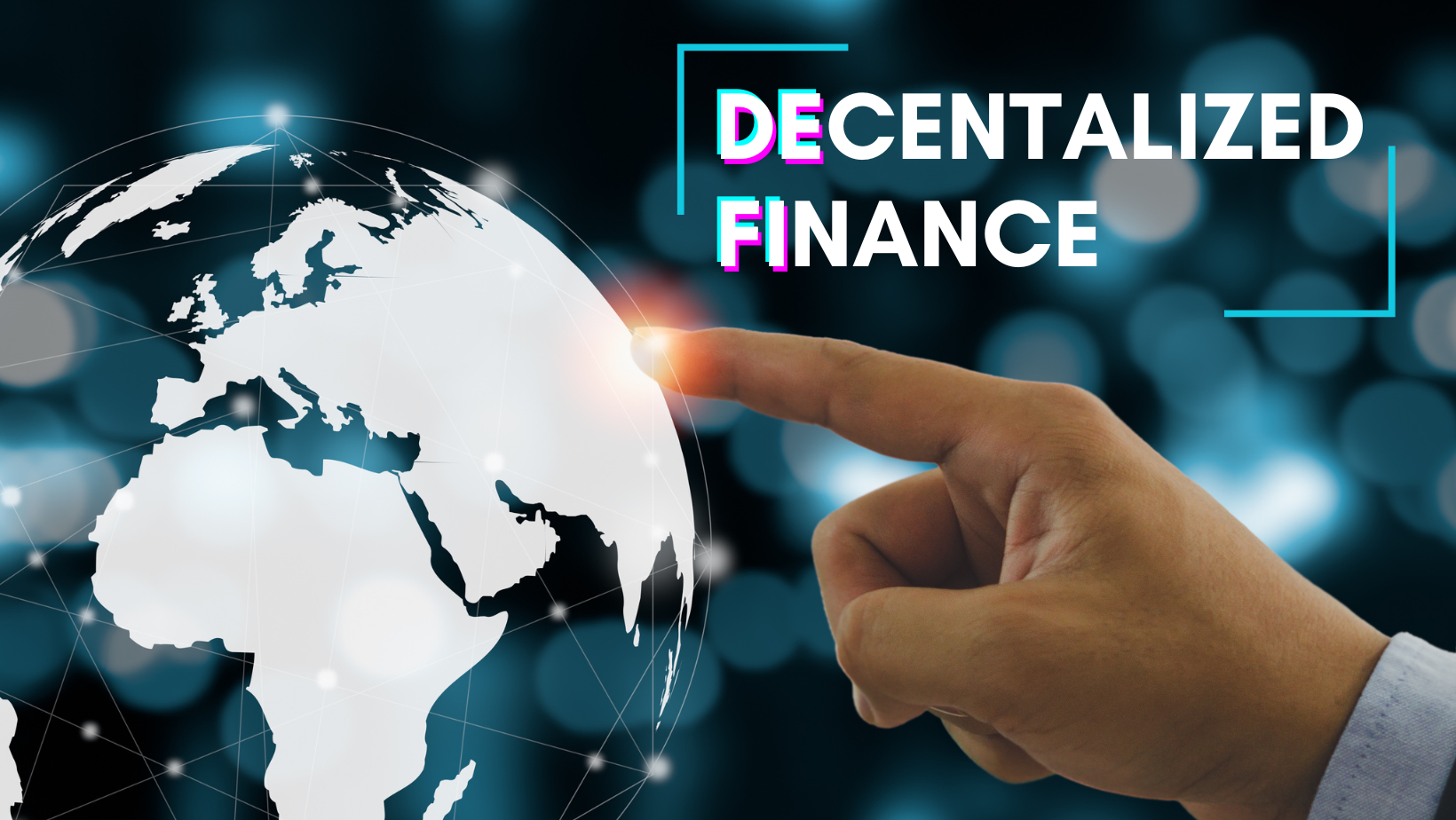
DeFi – Introduction and Financial Crime Risks
The evolution of financial services has been a constant and dynamic process, and the introduction of decentralized finance (DeFi) and blockchain technology is the latest chapter in this story. DeFi promises to democratize access to financial services and reduce traditional financial intermediaries, making it possible for anyone to access the same financial services and opportunities as the wealthy and well-connected. This evolution towards DeFi also brings uncertainty and risks in financial crime.
The decentralized and trustless nature of DeFi makes it a potential target for money laundering and terrorist financing; making it important for regulators, financial institutions and DeFi projects to work together to mitigate these risks. With the technology still in its early stages, the regulatory environment is uncertain and the need for oversight and regulations is crucial to ensure the long-term success of the technology and its potential to revolutionize the financial system. In this article, we'll take a closer look at DeFi and the Financial Crime risks associated with it.
Decentralized finance is a rapidly growing movement that utilizes blockchain technology to create new financial instruments and services that are open, transparent, and accessible to anyone with an internet connection. One of the main parts of DeFi is the use of decentralized exchanges (DEXs) to trade cryptocurrencies and other digital assets. DEXs are built on smart contracts and allow users to trade assets without the need for a central intermediary, such as a traditional stock exchange. Another key part of DeFi is the use of decentralized lending and borrowing platforms. These platforms use smart contracts to facilitate lending and borrowing of digital assets without the need for a central intermediary, such as a bank. This can be done through the use of stablecoins, which are digital assets pegged to the value of a fiat currency, such as the US dollar. DeFi also includes a wide range of other decentralized financial applications, such as decentralized insurance, prediction markets, and stablecoin issuance platforms.
Risks Associated with DeFi and how to mitigate them?
One of the key benefits of DeFi is that it allows for greater accessibility to financial services. Traditional finance often requires a high level of trust in centralized institutions, such as banks and governments. With DeFi, however, users can interact with financial services directly, without the need for intermediaries. This can lead to lower fees, faster transactions, and greater transparency. Moreover, additional benefit of DeFi is that it allows for greater security. Traditional financial systems are often centralized, which means that they are vulnerable to hacking and other forms of cyber attacks. With DeFi, however, transactions are recorded on a decentralized blockchain, which makes them more secure and less susceptible to attack comparing to centralized system (theoritically, it’s easier to tamper centralized system).
It is important to note that DeFi is still a relatively new and rapidly evolving field, and it is not without its own set of risks. As DeFi is built on top of blockchain technology, it is subject to the same volatility and regulatory uncertainty as the cryptocurrency market. Additionally, smart contracts can contain bugs and vulnerabilities, which can lead to the loss of funds. DeFi also poses unique challenges for Financial Crime Compliance. Below we can find some of them:
• Anonymity is one of the main risks associated with decentralized finance as it can make it difficult for regulators and law enforcement to track the movement of funds and identify money launderers and other financial criminals.
• Privacy-enhancing technologies: Mixers and tumblers, also known as "coinjoin" or "coin blending" services, are used to obscure the origin of cryptocurrencies and make it difficult to trace transactions on the blockchain. This can make it difficult for regulators and law enforcement to identify money launderers and other financial criminals.
• Lack of Know Your Customer (KYC) and Anti-Money Laundering regulations (AML): Many DeFi projects operate in a legal gray area and lack proper KYC and AML regulations, making it easy for criminals to launder money and finance illegal activities.
• Ponzi schemes and other investment frauds: The decentralized and trustless nature of DeFi makes it easy for criminals to launch Ponzi schemes and other investment frauds, defrauding investors of their funds.
• Ransomware and hacking: Decentralized finance protocols and smart contracts are vulnerable to hacking and ransomware attacks, leading to the loss of funds for investors and users. Despite the fact centralized systems are considered as easier target for attacks, the risk for decentralized systems is still relevant
• Terrorist Financing: DeFi can be used to facilitate and launder funds for terrorist activities, due to the anonymity and decentralization it offers.
In the light of aforementioned there are several ways to mitigate these risks within the DeFi ecosystem. One approach is the use of KYC and "know your transaction" (KYT) protocols.
The process of KYC typically involves collecting and verifying a customer's information such as name, address, date of birth, and government-issued identification number (such as a passport or national ID number). Financial institutions may also conduct background checks and assess a customer's transaction patterns to identify any potential risks. Robust KYC controls are especially important in order to reduce risk resulted from anonymity which can be used for money laundering or terrorist financing.
KYT is a compliance tool used to monitor and identify suspicious activity on blockchain networks. It is an important aspect of AML and counter terrorist-financing (CFT) regulations, which require financial institutions to identify and report suspicious transactions. KYT works by analyzing transaction data on the blockchain, including the amounts, addresses, and patterns of movement of funds. It uses machine learning algorithms to identify patterns of activity that may indicate money laundering, terrorist financing, or other financial crimes.
The process of KYT starts with the collection of data, which can come from various sources like blockchain explorer, blockchains, and wallets. Then this data is analyzed using advanced algorithms, which are capable of identifying patterns or anomalies that would indicate suspicious activity. These patterns are then compared against a database of known money laundering or terrorist financing patterns, and any identified suspicious activity is flagged for further investigation.
KYT is beneficial in tracking and identifying illicit activities on the blockchain and assists in investigations by providing additional information about the transaction and parties involved in it. However, it is important to note that KYT is not a foolproof solution and it does have its limitations. For example, it can only monitor transactions that are recorded on the blockchain, so any off-chain transactions or activities that take place outside of the blockchain will not be detected. Additionally, sophisticated money launderers may use methods such as mixing or tumbling to obscure their transactions, making it difficult for KYT to identify suspicious activity. Moreover, it is important to note that while KYT can detect suspicious activity, it cannot confirm whether a transaction is actually illicit. Further investigation is required to determine if a transaction is actually illegal, and financial institutions are responsible for conducting due diligence and filing suspicious activity reports (SARs) with the relevant authorities when required.
Presence of modern, “state-of-the-art” tools like mixers and tumblers requires new mitigating actions to reduce risks resulting from there usage.
One approach is the use of blockchain analytics tools, which allow the tracking of digital assets across multiple blockchains and assist in identifying suspicious activities and transactions. These tools can help regulators and law enforcement agencies to trace the origin of funds and identify money launderers, even if the transactions are obscured by mixers or tumblers.
Additionally, some DeFi projects are working with regulators and law enforcement agencies to establish AML and CFT compliance standards and guidelines for the sector. This can help to ensure that DeFi projects are in compliance with existing AML and CFT laws and regulations; and can also help to establish a framework for future regulation of this sector. This can include measures such as mandating the use of AML and KYC protocols for users accessing the platform and implementing transaction monitoring systems that can detect and flag suspicious activities.
Another approach is for DeFi platforms to implement stricter withdrawal limits, or implement a multi-sig mechanism for withdrawals. This way, even if an attacker is able to gain control of a user’s private key, they would still need to pass other security measures such as additional approvals before they can move funds, making it less likely to be successful. Furthermore, some DeFi projects are working on implementing solutions such as zero-knowledge proofs (ZKPs), which allow users to prove that they possess certain information without revealing it. This way, users can prove their identity to the platform without revealing sensitive personal information, making it harder for attackers to steal this information.
By implementing these solutions, it becomes possible to trace the origin of funds, detect suspicious activities, and make it harder for criminals to launder money and finance illegal activities.
When it comes to combating fraudulent behavior within DeFi ecosystem, the most relevant and powerful mitigating action is conducting research and due diligence when investing in DeFi projects. This includes examining the team behind the project, the technology and protocols they are using, and any partnerships or collaborations they have established. By thoroughly researching a project, investors can gain a better understanding of the risks and potential rewards associated with the investment. Another approach is to use DEXs that have implemented strict security measures and have a proven track record of protecting users' funds.
Conclusion
In conclusion, decentralized finance, has the potential to revolutionize the financial industry by providing easier access to financial services and creating more efficient markets. However, as with any new and rapidly evolving technology, there are significant risks associated with DeFi, particularly in the area of financial crime. These risks include money laundering, terrorist financing, and fraud. To mitigate these risks, it is essential that DeFi platforms and the wider ecosystem strengthen their controls and implement robust KYC and AML procedures. Additionally, there is still a huge level of uncertainty within the DeFi ecosystem, and it is important for regulators and industry participants to work together to address these uncertainties and ensure the integrity and stability of the DeFi market. In order to fully realize the potential of DeFi, it is crucial that the industry takes the necessary steps to address these risks and uncertainties.
Author: Mariusz Woźniak
Photo: Canva







